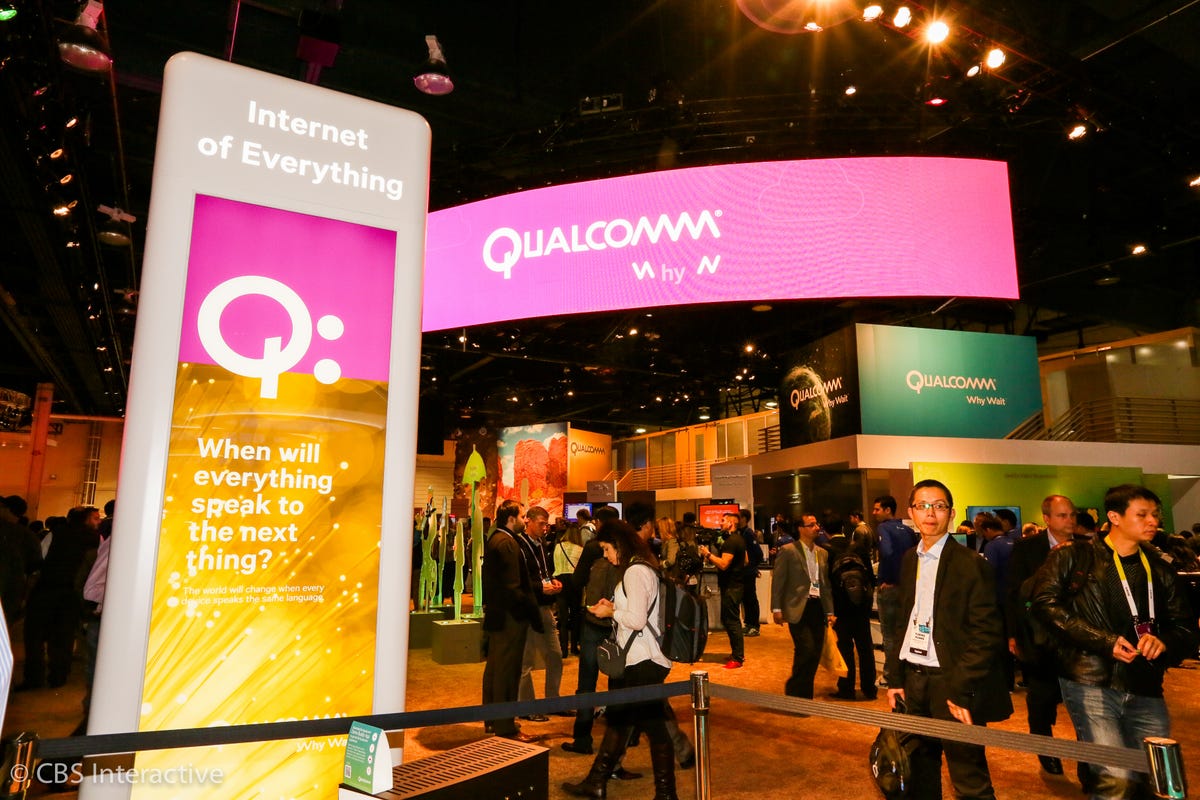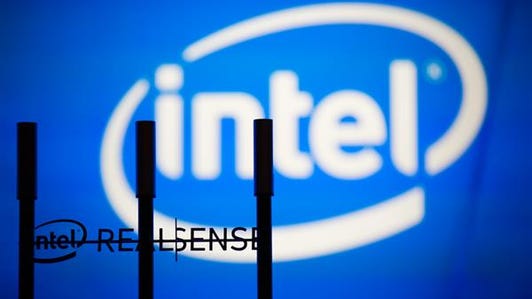
Sarah Tew/CNET
Well before the Internet of Things becomes an actual thing, chipmakers are jockeying to get a piece of the potentially huge new market.
References to the Internet of Things — the idea of connecting more devices and objects to the Web — were everywhere at this month’s Consumer Electronics Show in Las Vegas. There was hardly a booth or press conference without mention of the shorthand “IoT” and how it could change the way people interact with their cars, clothes and coffee makers.
There’s still an enormous amount of work to be done to make the concept a reality, but that’s not stopping chip companies from diving into the nascent space to define what a connected world will look like. The stakes are high. Chipmakers that succeed will be able to call the shots in a new and potentially lucrative market, while those that fall behind could be relegated to also-ran status.
“We’re in for fun times because we are in the midst of a land grab,” said Alfonso Velosa, an analyst for research firm Gartner.
Intel keynote at CES 2015: 3D printing, drones and selfies (photos)






+11 more
The Internet of Things has different definitions, but the idea boils down to adding smarts and an Internet connection to just about any conceivable object. The concept applies across dozens of industries, from smart cities to connected cars to wireless health to wearable technology.
It’s also attracted a lot of heavy hitters. Apple is quietly pushing its HomeKit smart home platform. Google’s Nest sells a few examples of early IoT devices, providing a self-programming thermostat and a smoke detector that can send alerts to your phone. Samsung has proclaimed it will connect everything it sells by 2020. More niche examples include August’s connected door locks and Quirky’s water-leak sensors. Down the road, as more IoT devices proliferate, they’ll be able to communicate with each other to automate more functions in the home, office or factory.
Looking at the battle at the chip level is useful because chipmakers — with their processors, radio chips and memory chips — are developing the foundation for the whole IoT market and, as a result, provide an early glimpse of the new world to come.
Tackling the IoT challenge
Many chipmaker executives said that with just a dash of additional R&D, they can sell existing technologies into new industries.
The benefits could be massive. While sales of certain electronics including PCs and tablets face challenges, the Internet of Things market is expected to grow on average by 13 percent each year through 2020, reaching $3.04 trillion and connecting billions of objects that year, according to researcher IDC.
Strategies for achieving that goal vary widely, with each company trying to use its strengths to attack the new market.


James Martin/CNET
Intel and Qualcomm, two of the biggest chipmakers in the world, are placing multiple bets in hopes of gaining footholds in several IoT markets, including building infrastructure, cars and smart homes. A primary focus for Intel — the leader in personal-computer chips — has been wearables, with the company teaming up with clothing accessory makers, including Oakley and Fossil, to design new products. One of the highlights of Intel’s keynote presentation at CES was the debut of Curie, a button-size chip designed to be embedded in wearables.
Qualcomm, the leader in smartphone chips, will focus on bringing its mobile expertise to health care and automotive this year.
“It’s broad but … it can be bucketized into big chunks,” such as smart homes and wearables, Raj Talluri, a Qualcomm products executive, said about the Internet of Things. “So if you build it like that, it’s actually not that broad.”
Such strategies make sense for the large players. With their size and scale, they can go after a number of targets at the same time with less danger of spreading themselves too thin, said Morningstar analyst Brian Colello.
“Maybe they won’t win in all of them,” Colello said of these multipronged approaches, “but they may win in some and that will be enough as they try to diversify.”
Qualcomm booth tour at CES 2015 (pictures)






+7 more
More moderate-size chip players are taking a more targeted approach. Broadcom hopes to use its dominance in set-top boxes to help cable companies reinvent those devices as hubs for new connections around the home, said Scott McGregor, CEO of the chipmaker. Nvidia, which made its name in graphics chips for PCs, is now pushing into automotive, hoping to power complex computerized dashboards and automated driving.
Some of the leaders in IoT so far are major players in microcontrollers — tiny, cheap processors used for simple functions — including Atmel, Freescale and Texas Instruments, said Gartner’s Velosa. While companies like Intel and Nvidia may go after some of the more advanced products such as cars and high-end smartwatches, these microcontroller players should be able to worm their products into all sorts of new objects — from garage doors to lighting to sprinkler heads — potentially making such companies a much bigger part of consumers’ lives.


James Martin/CNET
“There’s going to be a huge appetite for the tiny things,” Forrester analyst Frank Gillett said of microcontrollers.
Also, since microcontrollers already go in many different places — from barcode scanners to boiler control systems — the companies that build them are experienced in selling to thousands of customers in a variety of industries, making them well-suited for IoT, analysts said.
“I think the microcontrollers are best positioned, because they can sell to a broad base of products to a broad base of customers,” said Atmel executive Reza Kazerounian, which puts companies like his in the “sweet spot” for IoT.
Anyone’s game
There are many ways to go after IoT, but because it’s still a burgeoning category, no one company has yet to corner a market. That leaves things wide open for future conquest.
RELATED STORIES
- For Qualcomm, health care, autos represent the next frontier
- Intel tech brings us closer to the world of ‘Minority Report’
- Nvidia aims new ‘superchip’ at cars and smartphones
- Samsung, SmartThings and the open door to the smart home (Q&A)
To win in the new industry, analysts say chipmakers will need a broad portfolio of technologies in processing, sensing and communication, as well as the software to bring it all together and security protocols to keep it safe. Every one of these companies will also need a strategy to create or attach to a “gateway” — a centralized hub that connects all your objects to each other. The two leading consumer gateways these days are smartphones and wireless routers.
Because there isn’t a chipmaker out there yet that can provide all these requirements, analysts predict a raft of acquisitions and partnerships in the chips world as companies try to provide more complete IoT products and services. An early indicator of this trend could be Qualcomm, which last year agreed to pay $2.5 billion for British chipmaker CSR. The deal will allow Qualcomm to beef up its capabilities in Bluetooth, a key form of wireless connection expected to power IoT.
Even so, it should take years for leaders to start emerging in the new space.
“I think the good news for the chip players is that it’s a rising tide that will lift all boats,” Morningstar’s Colello said. “Whether it will lift some more than others right now is difficult to call.”




